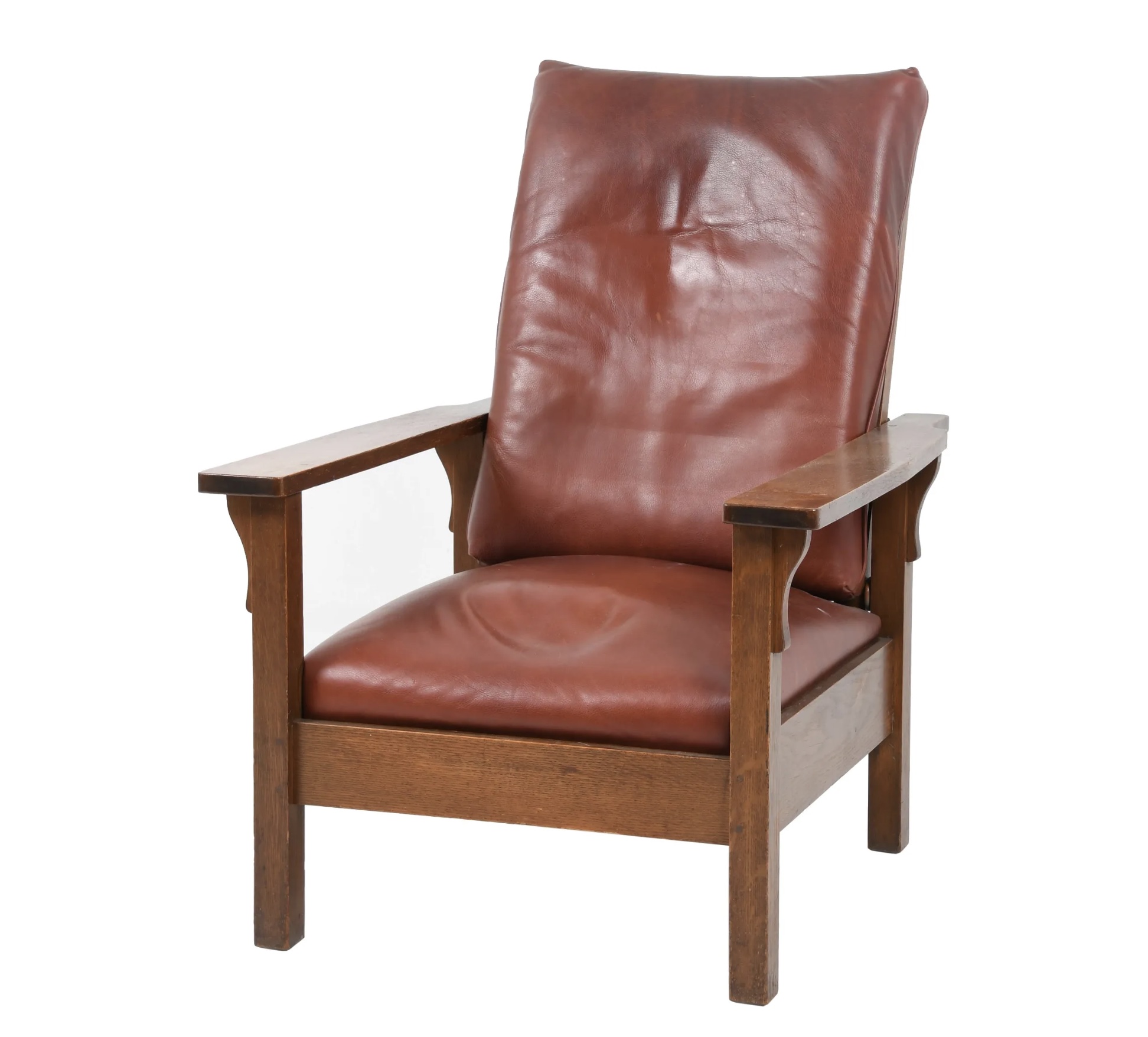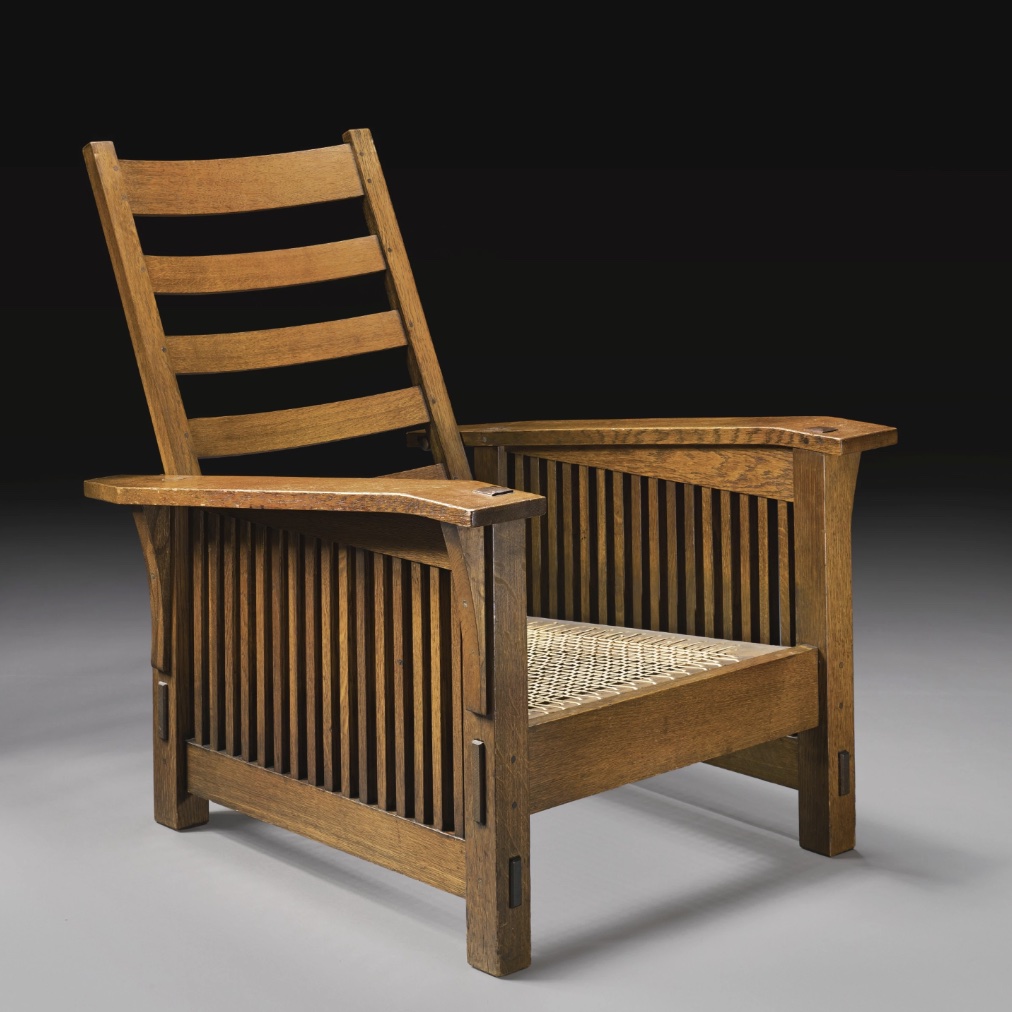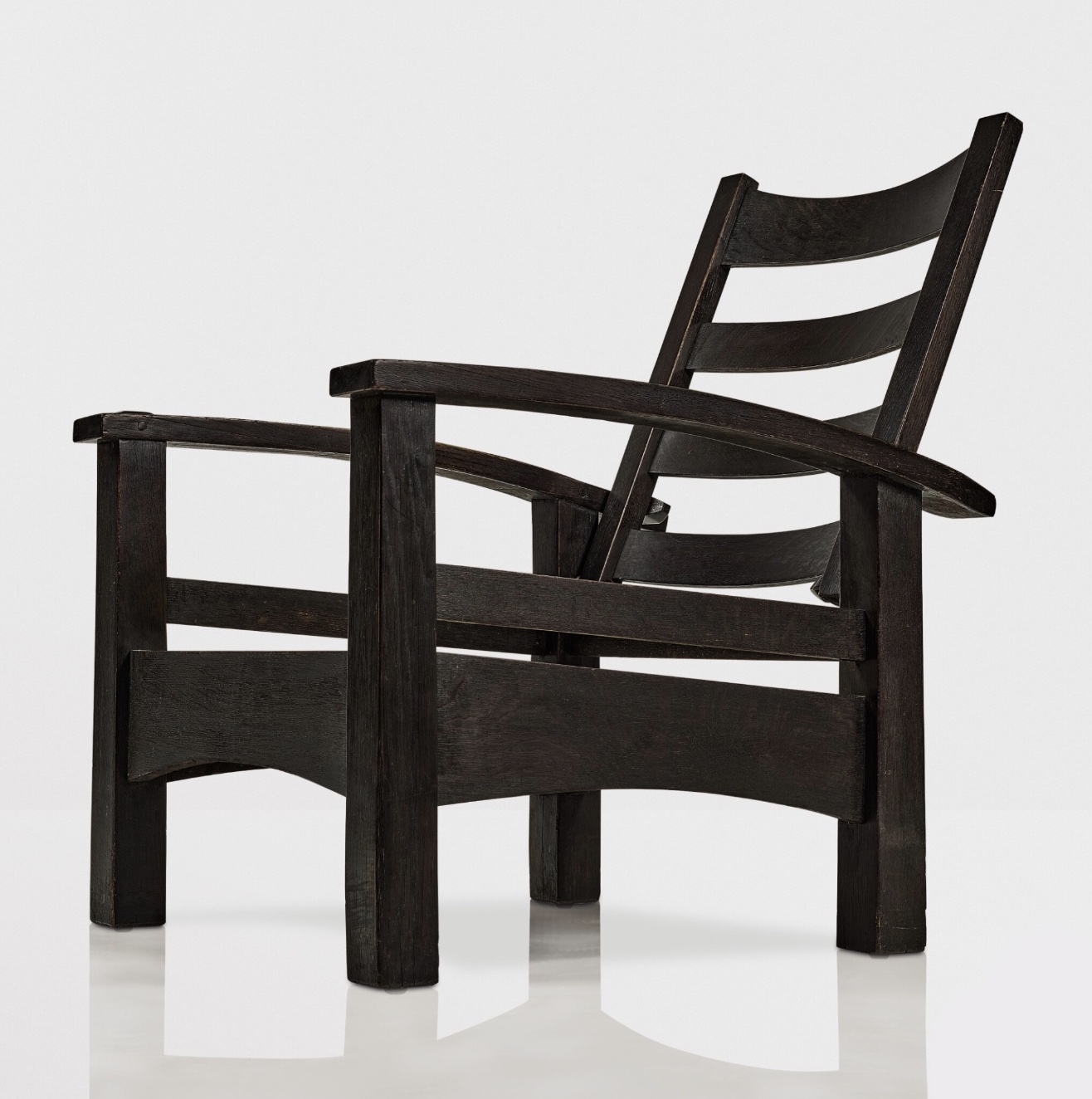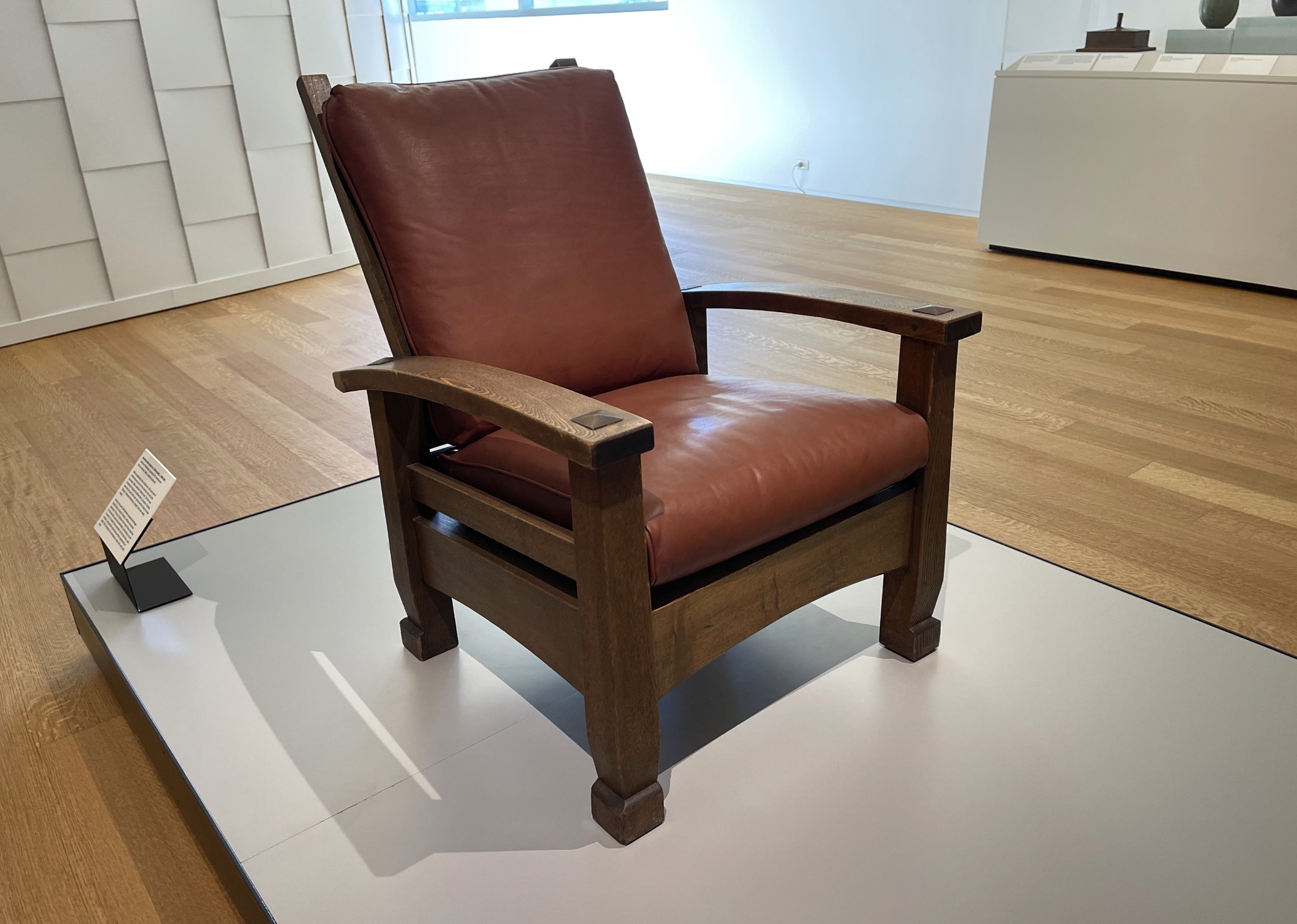A Morris chair is a type of reclining chair with distinctive design features, commonly associated with the Arts and Crafts movement. It was first designed by William Morris, a prominent figure in the British Arts and Crafts movement, in the late 19th century.
For more information on how we determine prices click here.

Gustav Stickley Morris Chair, #346, 1912; 39"h x 30 1/2"w x 34"d.
Photo courtesy of Fontaine's Auction Gallery.
Manufactured from 1902 until the end of production, this chair represents the simplest and least expensive Morris Chair designed by Gustav Stickley.
The chair depicted above is one of the last variations of this model. Earlier chairs feature through tenons at the arms and more angular, decorative notches at the back of the arm, with a curved shape at the front of the arm.
Price Range: $800 - $3,500

Drop-Arm Spindle Morris Chair, #369, 1905-8; 39"h x 33"w x 37.5"d.
Photo courtesy of Sotheby's.
The 369 spindle morris chair, along with its slatted counterpart, which features 5 slats instead of spindles on the sides, are among the most comfortable morris chairs made by any manufacturer during the arts and crafts period.
The earliest version of the spindle chair has a sling seat, while the one depicted above has a drop-in seat. The sling seat, made from heavy fabric with a leather edge, made the chair even more comfortable. However, a century later, the caps, or horizontal boards on the front and back of the chair responsible for fastening the sling seat, often split. This is a common issue with almost all spindle chairs with sling seats.
These chairs are typically upholstered in leather, but like all Stickley furniture, clients could customize the upholstery.
Price Range: $2,500 - $12,000

Reverse-Tapered Bow-Arm, #2340, 1901; 39"h x 36¼"w x 29"d.
Photo courtesy of Sotheby's.
Bow Arm Chairs were produced from 1901 through the end of production.
In the earliest experimental chairs, the width of the arms and the tightness of the bow varied greatly. Subtle differences could distinguish one chair from another. Consistently the earliest examples, like the one above, featured reverse tapered legs and arms about 2.5 inches wide.
To determine if your bow arm chair belongs to the elite class of early chairs check if the back pegs are pyramidal and if the chair has a drop-in seat that takes rope or cane instead of a later spring seat. Otherwise, as the chairs became later in production, the bows became less pronounced and were made from two instead of three boards to reduce costs.
The best example pictured above has a great black finish and all the unique Stickley design features that a collector might desire.
Price Range: $7,500 - $85,000

Experimental Morris Chair, 1900.
Photo by Michael Lehr and courtesy of The Museum of the American Arts & Crafts.
This chair is truly unique, and it's unlikely that we'll come across another example on the market. This chair was probably hand-built by the factory's woodworkers under direct supervision from the designers.
The more experimental a design is, the more sought after the chair becomes. The notched feet are a one-of-a-kind design element, unique to this specific chair, but conceptually mimics an early gout stool.
Made of chestnut with a pristine green original finish, it holds historical significance. Chestnut was exclusively used in early furniture, but discontinued due to the 1904 chestnut blight. The green finish is highly light-sensitive, so if you have a piece, it's crucial to keep it away from ultraviolet light to preserve its condition.
Price Range: N/A
